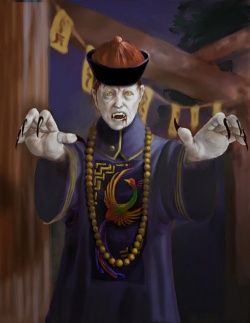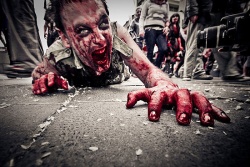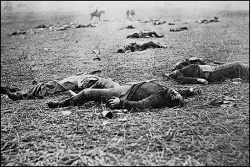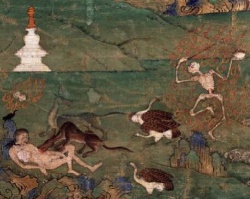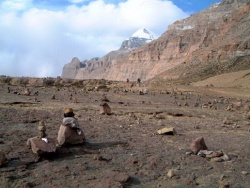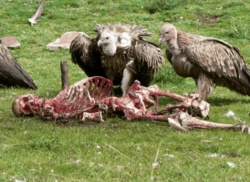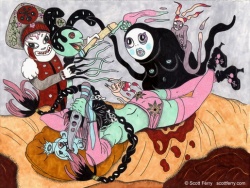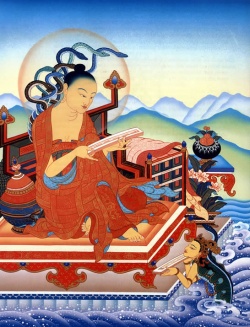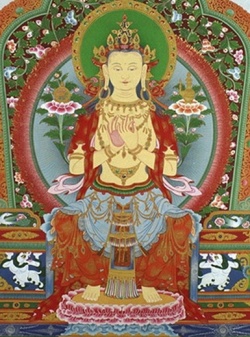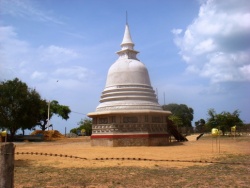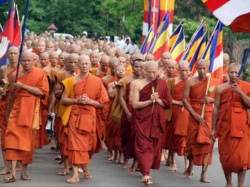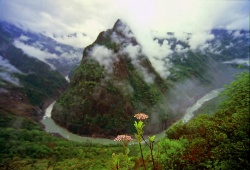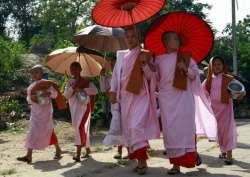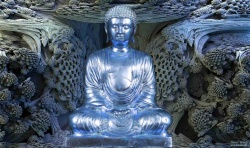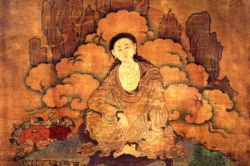The Dead Arise: Cases of Death and Return in Tibet
Click here to see other articles relating to word The Dead Arise: Cases of Death and Return in Tibet
The Dead Arise: Cases of Death and Return in Tibet
Joseph K. Langerfeld
Study Abroad Participant,
Tibet,
Spring 2000
ABSTRACT
In Tibet it has been known to occur that the body of a deceased person arises, sometimes as much as a week after clinical death. Those on hand, often family or monks reading the death rites, quickly try to determine whether the risen body is a délog or a rolang. The délog is “one who has returned from the dead.” Délog have traveled in the bardos, the intermediate stages between this life and the next, and have been miraculously allowed to return to life in the same body with knowledge of the bardos. Délog bring back messages from the dead, descriptions of what they have seen, admonitions from the Lord of Death, and teachings from the pure beings and celestial Buddhas.
The délog stories, recorded in autobiographies and biographies, are brought to Tibetan society by lama manis. These wandering minstrels use such stories to teach public audiences about the dharma (religious customs and rites) and the infallibility of karma (the law of spiritual cause and effect): by performing good actions, one attains liberation rebirth in the higher realms; negative karma, however, leads to great suffering in the bardos. In less desirable cases, the body of the deceased develops strange color in the face, sits up suddenly, and reveals in its eyes the wicked intent of a demon spirit that has taken control of a dead body. This is a rolang — “an awakened corpse.”
This paper presents popular and informed beliefs on délog and rolang and their nature and intentions, informed through conversations with an experienced Tibetan death-rite practitioner.
Death and the Bardos
According to Tibetan philosophy, there are four bardos or intermediate stages between this life and the next. The deceased move through these bardos during a maximum period of 49 days, after which time they are reborn or achieve liberation. The bardo of dying marks the beginning of the dying process. In this stage, the outer senses weaken and fail, the body’s elements dissolve and, lastly, the inner dissolution of consciousness takes place. It is then that the individual has died (Sogyal Rinpoche 1994, p. 252). In the bardo of the clear light, one may achieve liberation from samsara, the cycle of rebirth, by recognizing the formless, empty clear light as an emanation of one’s own “wisdom mind.” It is very difficult to attain the stability of mind to achieve this, and most beings will miss this opportunity for liberation and continue through the remaining bardos. In the bardo of dharmata, the bardo being (bardopa) sees various colors and lights appear out of the emptiness of the clear light, and the wrathful and peaceful deities are manifest in terrifying splendor. Most of the experiences related by délog occur in the last stage, the bardo of becoming (sipa bardo). In this stage the bardo-pa has a mental body but may mistake it for a real body and attempt to eat, drink, or communicate with the living.
Those with a great deal of negative karma experience hellish visions and tremendous fear in the fourth stage (Ibid., p. 291). The susceptibility of the bardo-pa’s mind at this stage means that even a single negative thought can lead directly to rebirth in the lower realms. However, Sogyal Rinpoche (Ibid., p. 294) notes that:
- The shifting and precarious nature of the bardo of becoming can be the source of many opportunities for liberation, and the susceptibility of mind in this bardo can be turned into our advantage. All we have to do is remember one instruction; all it needs is for one positive thought to spring into our mind.
Délog Namthar
Délog are people who die, enter the bardos, yet miraculously come back to life. Information on délog comes from their own experiences as they relate them upon their return. Their recorded words, called namthar, are powerful teaching tools for religious and lay Tibetans. Geshe Dawa, a teacher at the Library of Tibetan Works and Archives, asserts that karma can only be explained by telling life stories (Public Teaching Lecture, April, 2000). Délog teach the benefits of the dharma and of connections with compassionate teachers, and warn of the dangers of worldly attachments to family, friends, and wealth. They become, in fact, a link between the worlds of the dead and the living. Chagdud Rinpoche describes it this way:
- As a child in Tibet, I sometimes found my mother, Délog Dawa Drolma, surrounded by an audience listening with utmost attention as she told of her journeys to other realms. Her face was radiant as she spoke of the deities in the pure realms; tears flowed as she described the miseries of hell beings and pretas, or tormented spirits. She told of encountering deceased relatives of certain people, and she relayed from the dead to the living concerns about unfinished business (perhaps buried coins or jewels that could not be located) or pleas for prayers and ceremonies [to alleviate the suffering of the hell beings). (Barron and Chagdud, 1995, p. 1)
Chagdud Rinpoche (Ibid., p. xiv) contends: “Some délog appeared to be ordinary lay people, but the experience itself is a sign of great meditative realization, so they could not have been truly ordinary.” And Kyabje Song Rinpoche (1979, p. 20) adds that “Délog are considered holy in my country.”
Since délog are most commonly monks, nuns, or other practitioners, some die during times of spiritual retreat. The délog Lama Jampa Delek was on a retreat in the year 1596, as recorded in his namthar, when he lost his bodily warmth and began to spit bloody phlegm. Knowing he was quite ill, he says, “I performed reverential petitions to A-khu Rinpoche and did meditation. In the retreat I did whatever I could within my experience, but I could not control my body, and the stages of dissolution appeared in succession” (Epstein 1982, p. 42). Shugseb Jetsün Rinpoche (1852-1953) was a famous and accomplished female délog and a practitioner of Nyingma (the oldest tradition of Tibetan Buddhism). According to one biography, after her initial délog experience, she fell ill, died, and returned two more times. She took those opportunities to sharpen her skills in recognizing appearances to be empty (as manifestations of her own mind), therefore preparing herself for liberation from samsara (Yeshi and Tsering, p. 141). Khenpo Sangye Wandü (Interview May 1, 2000) explains that some délog undergo this process of death and return quite often, and usually on auspicious days of the month.
Délog are also able to return to life. Yangsi Rinpoche and Khamtrul Rinpoche (Interviews April 26, 2000 and April 28, 2000) explained that was possible because a subtle form of consciousness remained even after the body and gross consciousness have separated in the process of death. For this to occur, however, the body of a délog must be preserved to allow its consciousness to return. Traditionally, Tibetans were not cremated for at least seven days after death to ensure that the consciousness would not be disturbed as it moved through the bardos. In the namthar of Délog Karma Wangdzin, her relative says, “There are many stories of délog like Lingza Chökyi’s, about those who were carried off and returned. I fervently hope she’ll return as well. We’d best leave her body without touching it during the 49 days” (Epstein 1982, p. 67).
Stories of Délog
Karma Wangdzin first realized she was dead when, “taking some steps up and down, there was no sound of walking. I thought, ‘Alas, I’ve definitely died’” (Epstein 1982, p. 48). Lingza Chökyi, a famous sixteenth century délog, narrates her bardo experience in the following manner:
- My husband and children and all our friends and neighbors from the village came, crying . . . . I thought, ‘What are they doing? A curing ceremony? My disease has gotten better. You don’t all have to gather here.’ But they didn’t even toss me a glance and I felt peekish . . . . I thought, ‘But I’m not dead! My body is just as it was before . . . . Then they made tea and food and invited people in. They gave me nothing . . . . I was angry at all of them . . . . The suffering of my mind and body was boundless. My mind, not having a body to stay in, was wafted like a feather in the wind, moving to and fro (Epstein 1982, p. 43).
Délog with special faith and merit are able to visit the pure realms of the Buddhas in their bardo bodies; there, they are guided by the goddess Tara, an enlightened female being (dakini). The délog meet various deities and accomplished practitioners. These beings give the délog blessings as well as teachings, which délog impart upon the living upon their return to the human realm. Délog Dawa Drolma meets Guru Rinpoche in his celestial palace Zangdok Pelri, where he advises her to: “ . . . not forget the ways in which visions of the six classes of beings are manifest for you; return to the human realm and entreat people to pursue virtue” (Barron and Chagdud 1995, p. 101).
A prevailing aspect of délog’s stories is their journey to the lower of the samsaric realms — those of the hungry ghosts and the hells. The délog witness the severe agonies of the beings who have taken rebirth there, such as those “who had cheated others in business, told lies and blasphemed, who had robbed their helpless elders, spoken ill of or beaten monks, etc.” (Barron and Chagdud 1995, p. 76). Délog may meet monks in the hell realms who have broken their vows, taken money for rituals but neglected to perform them, rejected their teacher, or caused dissent among the Sangha (community) (Barron and Chagdud 1995, p. 76).
Délog often give gruesome descriptions of the condition of these unfortunate souls. In the cold hells Jetsün Rinpoche visits, there are “snow and blizzards, beings with bodies as blue as an utpala flower and with blisters cracking into a hundred different pieces” (Yeshi and Tsering, p. 138). Two women Dawa Drolma meets had administered poison to a lama, seduced monks, and slandered their spiritual superiors. The end result was that their backs were weighed down with boulders of molten metal, their tongues were sliced with iron swords burning with fire, and boiling molten metal was poured into their mouths” (Barron and Chagdud 1995, p. 77).
These scenes often move délog to compassion, and they sometimes try to save hell beings from their tortured existence. When Shugseb Jetsün Rinpoche meditated,
- The hell beings’ shrieks and screams slowly quieted down until all became silent and they sat still with their hands folded, an infinite crowd of beings, stretching as far as Lochen’s eyes could see . . . gradually the remaining sufferings of the beings before her vanished . . . . Lochen prayed and meditated even harder and many of the creatures who appeared before her died and took birth in better realms (Yeshi and Tsering, p. 138).
Eventually, délog undergo judgment in the court of the Lord of Death, also known as the King of Religion (Dharmaraja, or Chögyäl). Dharmaraja holds the mirror of karma, Lekimelong, in which the deceased clearly sees his or her previous good and bad deeds. White and black beings attest to one’s actions, casting white and black stones on the scales of justice. Dharmaraja then gives his sentence, and the being is whisked away to rebirth in one of the six realms of samsaric existence.
Despite his terrifying and wrathful appearance, the Lord of Death is a fair judge. He “continually reminds those that come before him not to be afraid of him, that if one has done virtues to balance sin every action will be considered in the defendant’s favor” (Epstein 1982, p. 72). Dharmaraja tells one délog that “between the high king seated on his throne and the lowly beggar leaning on his staff — for these two there is not a hair’s worth of ‘high’ and ‘low’ in my presence, so come to me having practiced the virtue of the dharma [ religion ]” (Barron and Chagdud 1995, p. 76).
The judgment a délog receives is unique, because he or she is sent back to the realm of the living to resume life in the same body. It is the délog’s positive karma, actions embodied with compassion, that allows them to extend their natural lifespan and return to life. Kyabje Song Rinpoche (1979, p. 20) teaches that “if [both] one’s lifespan and merits have been depleted then nothing can save one from death . . . . If there is a residue of good karma and the lifespan is exhausted, then the lifespan can to some extent be easily restored. People having such residues can be brought back to life, even if they die of sickness.” As Dharmaraja said to délog Karma Wangdzin, “Because of the benefits of the power of your previous prayers and virtues, you will return to your body in the human realm” (Epstein 1982, p. 55).
One commonly cited reason for the délog’s return is so that they can benefit human beings by sharing their story of death and return. Khamtrul Rinpoche (Interview April 28, 2000), a personal teacher to His Holiness the Dalai Lama, tells that délog “with the greatest accumulation of merit through aspiration, prayer, and compassion,” will be able to maintain the stability of mind such that when they return as délog they will have the ability to benefit others. As White Tara says of Dawa Drolma, she “encountered unfathomable realms of pure vision. If she goes back to the world of humans, she can tell of the moral choices of accepting virtuous actions and rejecting harmful ones. She can turn the minds of sentient beings. She can accomplish immeasurable benefit for them” (Barron and Chagdud 1995, p. 38).
Today, many Tibetans believe that there are few people in this degenerate age who accumulate enough merit to become délog. Yangsi Rinpoche (Interview April 26, 2000) wrote that, “in ancient times, people were honest and ethical. They had respect for and a close connection to Mother Nature. So they had a background of strong merit. Even if a person died, due to strong karma they had the chance to extend their life.”
Rigzen Chösang, the only living disciple of délog Jetsün Rinpoche, believes that this process no longer occurs (Interview May 27, 2000). Ngakpa Kälsang, a lay Tantric practitioner who performs death rituals, explains that today bodies are cremated after only three days, before they begin to smell, so délog are no longer possible (Interview May 5, 2000). And, in fact, Khamtrul Rinpoche (Interview April 28, 2000) has not heard of any délog anywhere in the world since a generation ago. In 1979, however, Kyabje Song Rinpoche (1979, p. 19), writes in his teaching that “in the case of men, there are many délog who return into the body after death, especially in Kham [an outlying region of Tibet).” And Alag Rinpoche (Interview April 29, 2000) of Amdo, Tibet, maintains that “it is still very common in Tibet today.”
Wandering Bardos
The most vivid explication of délog themes and biographies is found in the performances of lama manis, wandering minstrels who travel around, teaching at public gatherings. Even those with little education can learn about human evolution by learning about their teachings on hell, enlightenment, the bardos, and karma (Khenpo Pema Sherab Interview May 4, 2000). In particular, lama manis preach the benefits of the Om mani padme hung mantra (hence the name ‘lama mani’), quoting from the songs of the yogi Milarepa or from various epics and délog namthar. Lama manis also pray and perform pujas (worship rituals) for families in the community.
Traditionally, lama manis have a thangka, a religious iconographic scroll painting to supplement their teachings. With a stick, they point out specific scenes on the thangka as they sing their stories and teachings. In the past, most performed their stories from memory, but later lama manis began reciting relevant texts along with the thangkas. Often délog become lama manis. Rinchen Drolma Tsering (1970, p. 49) writes of Délog Jetsün Rinpoche’s experiences as a lama mani:
- From the age of six she preached with a thangka, by singing of religion in a wonderfully melodious voice, and whoever heard her found their hearts coming closer to religion. As a child she had a little goat to ride . . . . When in her youth she went along in the streets of Lhasa . . . preaching from door to door, she caught the hearts of many Lhasa girls who became nuns and followed her.
Today, Puchen Gyurme (Interview May 9, 2000) is one of only three lama manis in India; he presently lives in a Tibetan settlement in Dehradun, located in the northern Indian state of Uttaranchal (formerly Uttar Pradesh). At the age of eight, he began to study about Chenresig, the Buddha of Compassion. He began his life as a lama mani at the age of 13 and he is now 71 years old. “There isn’t a place in India I haven’t been,” he proudly said, showing me a stack of official papers from the Tibetan settlements he visited. In June 2000, he traveled to Washington, D.C. to perform at a Tibetan Festival.
Puchen has 18 texts and 9 thangkas which he uses to perform. He can recite one text using one thangka in a single day, but the telling of some epics can last for days. The role of the lama mani, Puchen says, is to obtain instructions from a high lama and then to put what is learned to use in public gatherings. Lama manis are, in popular belief, manifestations of Chenresig, the Buddha of Compassion. Because of this, they enjoy a special connection with His Holiness, the XIVth Dalai Lama, Tenzin Gyatso, also an emanation of Chenresig. Presently, Puchen says, a lama mani must go to the Dalai Lama for such instructions. “There is no way to understand the dharma without relying on Tenzin Gyatso,” he asserts.
In délog Chaträl Kunga Rangdrol’s namthar, Dharmaraja tells him:
- Give this advice to the mani-pas [ lama manis ] of the world! First, ask instruction from teachers, disciples, and lamas. Then turn the kingdom to the dharma. Those who tell of Jinla Laga, Sugkyi Nyima, Nangsa Öbum, the royal histories and the Buddha’s deeds; those that tell the biographies of Gomchung Karma Wangdzin, Padma, Tenzin Chödrön and Lingza Chökyi’s messages; do not exaggerate what is in them. Say manis with your body, speech, and mind. If you look at [some lama manis] exteriorly, they are mani-pas; if [you look at them] interiorly, they are like parrots. [A proper lama mani ] need not be ashamed when he comes before me (Epstein 1982, pp. 56-7).
Because of this advice, Puchen is hesitant to “summarize briefly” the Karma Wangdzin namthar he has before him, which is two generations old. “It’s important that I follow the text. There is an adage that says if one misuses or elaborates, it is not a good commentary.” Puchen finds it difficult to convince Western people of “these things,” like délog and the 18 hot and cold hells, especially, he thinks, because of the language barrier. With the right language to convey it, though, he believes that Westerners can be convinced. Délog doesn’t happen “in just one community — it happens all over the world.” Puchen then notes that “sometimes it’s difficult to see [when the body revives] if it is a délog or a rolang.”
Rolang — The Awakened Corpse
When a corpse begins to arise, “usually a lama must be called in to confirm the adventures of the délog as authentic, in order to insure that a dangerous spirit has not taken control of the corpse” (Epstein 1982, p. 58). The Tibetans interviewed, distinguished délog and rolang by the inner motivations of each and by the appearance and behavior of the revived body. Délog return to the body because of their aspirations or orders to benefit sentient beings. Rolang are negative or evil spirits that have only a desire to harm. Délog return to life gently and recover as a person normally does from an illness. When the rolang arises, however, “it is usual for the head to slowly move. The body takes a peek to see if anyone is watching. Then it opens both eyes and stands up” (Song Rinpoche, 1979, p. 11). Song Rinpoche (Ibid., p. 20) maintains, however, that “we cannot tell for certain whether it is the genuine consciousness of the dead person or that of some other spirit.” He contends that some rolang, for example, “enter bodies and relate everything about the activities of the dead person in just the same fashion as he himself would tell it if he were alive” (Ibid., p. 11).
In délog stories there is usually some initial apprehension on the part of onlookers. Karma Wangdzin recalls in her namthar that her “body moved a little . . . and made the curtain covering her face sway. The monk [ standing watch and performing rites) thought, ‘Is this not a zombie [ rolang ] possessed by a powerful gyälpo demon, who wants to do harm?’” (Epstein 1982, p. 54). When délog Nangsa Öbum arose after being dead for a week, “some said that the apparition was not Nangsa but a [ rolang ] and would not go near it, others determined to stone her.” She called out, “Do not fear, I am no zombie but really have come back to life” (Dorjey and Wynniatt-Husey, no date given, pp. 332-3).
Once arisen, rolang have particular abilities and qualities, and there are various methods of prevention and destruction available to the rolang’s potential victims. Rolang are said to move only in a straightforward direction and cannot bend at the knees. They can kill others and often make other people into rolang as well by touching them. Song Rinpoche (1979, p. 11) wrote that “. . . people die instantly when the rolang says ‘Ha!’ If it cannot kill then it tries to damage. It hits people or breathes on them, and they may die.”
Tibetans speak of four types of rolang. Rülang are “bone-rolang,” draklang are “bloodrolang,” wülang are “breath-rolang,” and mewalang are “mole-rolang.” A rülang can be destroyed by breaking its leg bone; a draklang must be made to bleed; and the wülang must be suffocated. The mewalang is the most difficult rolang to destroy as one must find a mole on its body and find a way to cut it out. However, in many stories the rolang is defeated by other more simple means, such as by chanting mantra (a mystical formula of invocation or incantation) while whipping or hitting the rolang, or by pushing its head back down before it fully arises. It has been said that “ . . . if you spit before a rolang can breathe on you, then it cannot harm you” (Song Rinpoche 1979, p. 13).
Rolang may also be destroyed by a “severance” ritual and phowa, the forceful ejection of the rolang’s consciousness into other realms. A rolang may also be buried or cremated (with urgency). A simpler prevention is to construct a short doorway and a tall step at one’s threshold. The rolang, unable to bend at the knees, will hit its head on the door and be unable to step over the threshold. Yangsi Rinpoche (Interview April 26, 2000) adds that Tibetan nomads keep two large objects on either side of their tent doorway, connected by a stick. Alag Rinpoche (Interview April 29, 2000) also remembers holes in his door in Tibet so that one could poke a stick through to ward off a rolang attack.
Though Tibetans laugh when the subject of rolang is mentioned today, they love to share stories and beliefs about rolang. Pema-la, Kelsang Dolkar, and Khenpo Pema Sherab (Interviews May 2000) said they used to know many rolang stories but have since forgotten them. It is common in these stories to tell about rolang assaulting travelers. For example, the secret autobiography of His Holiness the VIth Dalai Lama tells how he subdued two rolang while traveling in the Mön region. Using his tantric ritual dagger, he was able to pin the rolang down on the ground. He and his companions then destroyed the rolang by smashing their bones with rocks (Tenzin Sepak, Interview April 25, 2000).
The rapid multiplication of rolang in an enclosed monastery or village is another common theme. Yangsi Rinpoche (Interview April 26, 2000) told the story of a monastery where a rolang was locked inside with the monks. The rolang attacked and soon most of the monks became rolang or were killed by rolang. The people outside thought to dig a large hole, so that when they opened the gate, the unharmed monks could run around the hole while the rolang, who walk only in straight paths, fell into the hole.
Rolang beliefs vary considerably in different regions of Buddhist Asia. A Bhutanese abbot told me that rolang is hereditary and that if a man’s body is taken and becomes rolang, not only will his wife become rolang at death, but his children also. He says that rolang only operate from dusk till dawn; when the sun rises they stand still wherever they happen to be. The great-grandmother of another Tibetan acquaintance said that when a cat licks the heel of a corpse, that body also becomes a rolang. Alag Rinpoche (Interview April 29, 2000) of Amdo, thought that rolang can also gain the ability to fly.
According to Song Rinpoche (1979, p. 14), the purpose of these rolang stories is the following:
- . . . to keep you amused, as well as to show that this body of ours which we cherish so much can come under the control of others after we die. It is our excessive craving that gave us a body in the first place, yet this body has no real loyalty to us in return.
Ngakpa Kälsang
In Tibet, there were once many Ngakpas who were able to transfer the consciousness of the rolang to a different realm or to destroy them (Alag Rinpoche, Interview April 29, 2000). Ngakpa Kälsang has performed death rites for Tibetans in his community for over 40 years (Interview May 5, 2000). A Ngakpa is a tantric lay practitioner (i.e., one who adheres to certain vows that help to integrate all aspects of one’s life into spiritual practice), typically of the Nyingma school of Tibetan Buddhism, and one who is highly specialized in various and secretive rituals. These rituals include those to subdue the evil spirits in a region, to influence the elements, and to perform death rituals and other forms of worship (Ngakpa Karma Londrup, Interview May 4, 2000).
When performing death rites, Ngakpa Kälsang, a respected and popular Ngakpa in his community, typically stays up throughout the night in a room with the corpse and reads the Bardo Thödröl, the Book of Liberation, which details for the deceased person’s consciousness what attitudes to take, what to remember, where to go, and so on, in order to guide him through the bardos. “Reading the Bardo Thödröl is like pulling the reins of a horse,” he explained. “The horse is made to go in one direction. In this case, you pull the reins so that the horse [i.e., the deceased] will go to the heavens and not to the hells.” Ngakpa Kälsang estimates that he has presided over more than 1,000 corpses. During this time, however, he has witnessed only two cases of rolang.
In one instance, after four days of performing a death ritual in Nepal, Ngakpa Kälsang (Interview May 5, 2000) removed the corpse’s face cover and found that its eyes were wide open. He narrated the series of events as follows:
- “The face looked quite fresh, but it was a blackish blue color. At that time there were three of us Ngakpas, but the other two ran away out of fear. They had seen the eyes and the face of the corpse. I even ran away, but only a little bit. I gave it a second thought: if I let this one go, then the whole area would fill up with rolang! So I went back. I found a shirt in the room and bound the corpse’s face. The corpse had long hair, so I put my knee on its shoulder blade, and pulling by the hair and pushing again, I broke its neck. Then I bound the legs behind its head. Before there was no sign of blood, butsoon the entire floor was covered in blood. I carried the body on my back, as the cemetery wasn’t far, and when we got there I removed the shirt and found that the eyes had closed and the face looked like a real corpse. This case was a draklang, because the blood came out all over the place.”
Ngakpa Kälsang took a vow that he would perform death rituals any time he was called on, understanding that death was the saddest event that people deal with and therefore they should never be ignored or refused by those designated to help. When the Tibetans were first exiled in the 1960s, most were very poor and lived in tents. “Many people died,” Ngakpa Kälsang said, “so every day I did puja (magic or worship) for at least one body. When I was 30 or 40 years old, I could stay awake for two or three nights reading the Bardo Thödröl without sleeping. Now I’m 72, so I fall asleep sometimes.”
Trongjug: The Transference of Consciousness
A corpse can be taken by an evil spirit and become a rolang, but a body may also be taken by a living Tibetan master through the practice of trongjug. The great Nyingma master H.H. Dingo Khyentse Rinpoche explained that “the practice of transference is quite special. If someone is very old and will not live much longer, but still wishes to continue his dharma practice and help others, then he can enter a fresh corpse that is young, strong, and healthy” (Heruka 1986, p. 94). Khenpo Pema Sherab (Interview April 5, 2000) recounted that “a long time ago when people would die, an old man who was honest and good would transfer into a young corpse” to avoid the disruption of one’s consciousness which occurs when transfering from one life to the next.
Allegedly, trongjug is no longer practiced today. Ngakpa Karma Londrup (Interview May 4, 2000) noted that the transmission from teacher to student has been disrupted and so the lineage of that teaching did not continue. He was referring specifically to the time of Marpa Lotsawa, a great Tibetan master. Marpa obtained secret oral instructions on the ejection and transference of consciousness (phowa and trongjug) from his master Naropa (Heruka 1996, p. 155). Marpa transmitted these secret doctrines to his son Tarma Dode, who later died suddenly. In Marpa’s biography it is explained that “since the instructions of the ejection and transference of consciousness that bring enlightenment without effort in meditation were not destined to spread in Tibet, they could not find even one male corpse without a wound” (Heruka 1986, p. 171).
In one well known story, the Indian pandit Shankaracharya, was challenged to a debate on sensual love. Being celibate, he was at a disadvantage. The idea then came to him to practice transference, and he assumed the body of a recently deceased king. The king’s body arose and he called all his handmaidens and consorts to his bedroom, where his lessons commenced. Returning to his own body the next day, Shankaracharya was then in a position to argue and win the debate (Evans-Wentz 1958, p. 257).
Abuses of such a highly developed tantric practice are further illustrated by the story of a prince and his servant who both knew the practice of trongjug. One day the prince transferred his consciousness, out of compassion, into a mother bird which he had seen die, so that he could feed its chicks. He asked the servant to watch over his deserted body, but the servant who was attracted to the prince’s wife, took the prince’s body. The prince then had no choice but to take the body of the servant (Khenpo Pema Sherab, Interview May 4, 2000).
Drawing Conclusions
It is difficult to classify délog and rolang beliefs or even to assess the degree to which they are folk tales, ghost stories, science, religious commentaries, epics, or mere entertainment. Perhaps they contain elements of all of the above.
Today, the presence of lama manis and stories of contemporary délog are exceedingly rare in Tibet. Many Tibetans attribute the decline of délog to what they perceive as the degenerate times in which we now live. Though presumably all Tibetans know of délog, they are rarely mentioned by name, and few individuals thought that these phenomena were still possible in our times.
The lama mani profession, nonetheless, is an effective way to teach the dharma, as well as representing a fascinating cultural phenomenon. Hopefully, this rich tradition will not disappear and it will be passed on to future generations of Tibetans both in Tibet and in exile. Beyond the fascination of the délog and rolang phenomena themselves, however, they provide an unusually revealing perspective on one aspect of life — and death — which Tibetan Buddhism has so deeply embraced in its philosophy and in practice.
References
- Barron, Richard and H.E. Chagdud Tulku Rinpoche (Translator). 1995. Delog: Journey to Realms Beyond Death: Delog Dawa Drolma. CA: Padma Publishing.
- Dorjey, Tseten and Dominic Wynniatt-Husey (Translators). No date. “Nangsa Obum” in Choyang Magazine, Year of Tibet Issue.
- Epstein, Lawrence. 1982. “On the History and Psychology of the ‘Das-log’” in The Tibet Journal. Published by the author.
- Evans-Wentz, W.Y. 1958. Tibetan Yoga and Secret Doctrines. London: Oxford University Press.
- Heruka, Tsang Nyon. 1986. The Life of Marpa the Translator: Seeing Accomplishes All. Boston, MA: Shambala.
- Inoue, Takao. 1981. Photography from Buddhist Wall-Paintings of Ladakh. Switzerland: Olizane.
- Kyabje, Song Rinpoche. 1979. “Birth, Death, and Bardo,” in Dreloma — Drepung Loseling Magazine.
- Sogyal Rinpoche. 1994. The Tibetan Book of Living and Dying. Patrick Gaffney and Andrew Harvey, Editors. San Francisco, CA: Harper Collins.
- Tsering, Rinchen Drolma. 1970. Daughter of Tibet. London: Camelot Press, Ltd.
- Yeshi, Kim and Acharya Tashi Tsering. No date. “The Story of a Tibetan Yogini: Shungseb Jetsun,1852 –1953” in Choyang Magazine, Year of Tibet Issue.
Interviews
- Alag Rinpoche. April 29, 2000. Mcleod Ganj, India
- Geshe Dawa. April 2000. Public Teaching Lecture, Library of Tibetan Works and Archives, Mcleod Ganj, India
- Kälsang Dolkar. May 1, 2000. Bir, India
- Khamtrul Rinpoche. April 28, 2000. Mcleod Ganj, India
- Khenpo Sangye Wandü. May 1. 2000. Chökhorgyäl Monastery, Bir, India
- Khenpo Pema Sherab. May 4, 2000. Shugseb Nunnery, Mcleod Ganj, India
- Kusho Tenzin Sepak. April 25, 2000. Institute of Buddhist Dialectics, Mcleod Ganj, India
- Ngakpa Kälsang. May 5, 2000. Mcleod Ganj, India
- Ngakpa Karma Londrup. May 4, 2000. Mcleod Ganj, India
- Rigzen Chösang. May 7, 2000. Mcleod Ganj, India
- Pema-la. April 25, 2000. Mcleod Ganj, India
- Puchen Gyurme. May 9, 2000. Dehradun, India
- Yangsi Rinpoche. April 26, 2000. Tushita Retreat Center, Mcleod Ganj, India
